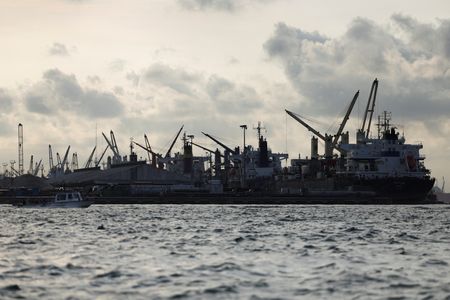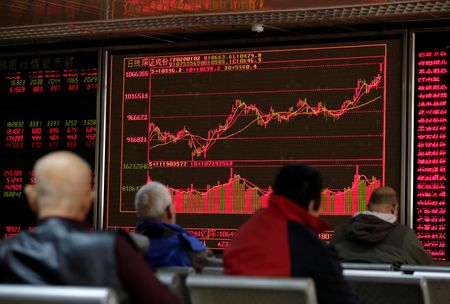By Enes Tunagur
LONDON (Reuters) -World oil supply will rise more rapidly than expected this year and next as OPEC+ members further increase output and supply from outside the group grows, the International Energy Agency said on Wednesday.
Supply will rise by 2.5 million barrels per day (bpd) in 2025, up from 2.1 million bpd previously forecast, the IEA, which advises industrialised countries, said in a monthly report, and by a further 1.9 million bpd next year.
OPEC+ is adding more crude to the market after the Organization of the Petroleum Exporting Countries, Russia and other allies decided to unwind its most recent layer of output cuts more rapidly than earlier scheduled. The extra supply, along with concern about the economic impact of President Donald Trump’s tariffs, has weighed on oil this year.
Supply is rising far faster than demand in the IEA’s view. It expects world oil demand to rise by 680,000 bpd this year and 700,000 bpd next year, both down 20,000 bpd from the previous forecast.
“The latest data show lacklustre demand across the major economies and, with consumer confidence still depressed, a sharp rebound appears remote,” the agency said in the report that linked its higher output forecast to increased OPEC+ production targets. “Oil market balances look ever more bloated.”
IEA demand forecasts are at the lower end of the industry range, as the agency expects a faster transition to renewable energy sources than some other forecasters. OPEC on Tuesday maintained its forecast for demand to rise by 1.29 million bpd this year – almost double the IEA figure.
Oil prices extended losses after the IEA published its report at 0800 GMT, with Brent crude trading lower than $66 a barrel.
IMPLIED SURPLUS TO RISE
The report implies that supply may exceed demand by almost 3 million bpd next year, driven by growth from outside the wider OPEC+ group and a limited expansion in demand.
Despite higher OPEC+ production, non-OPEC producers will continue to lead supply growth this year and next owing to rising output in the U.S., Canada, Brazil and Guyana, according to the IEA.
Still, additional sanctions on Russia and Iran may curb supplies from the world’s third and fifth largest producers, the IEA said.
The U.S. announced new sanctions on Iran last month and the European Union lowered a price cap for Russian oil as part of its latest sanctions on Moscow.
“It is clear that something will have to give for the market to balance,” the IEA said.
Continued Chinese stockbuilding due to major institutional and policy developments aimed at enhancing energy security may help absorb the surplus, the agency said. This helped support prices earlier in the year, analysts have said.
Despite lowering its demand forecast, the IEA expects global crude oil refining rates to approach a fresh all-time high of 85.6 million bpd in August, after reaching 84.9 million bpd in July.
Global refinery runs will rise by 670,000 bpd to 83.6 million bpd in 2025 and by a further 470,000 bpd to 84 million bpd in 2026, driven by better than expected data for market economies grouped in the Organisation for Economic Co-operation and Development (OECD) and China, the agency said.
(Reporting by Enes TunagurEditing by Alex Lawler, Bernadette Baum and Tomasz Janowski)











